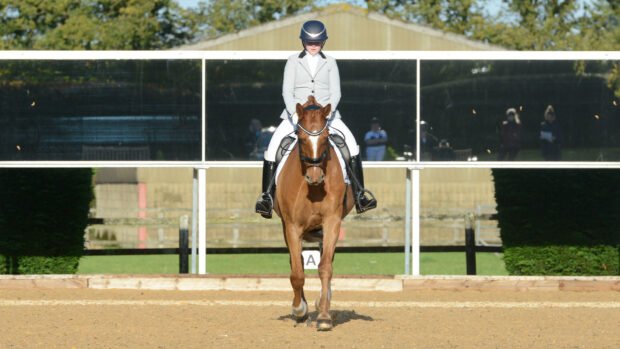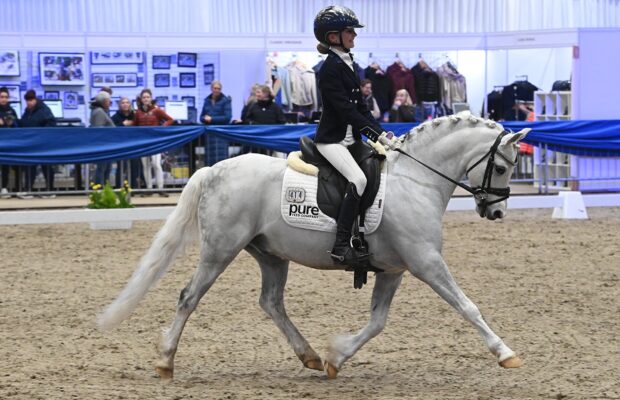Alison Lincoln, author of the book Equine Sports Coaching, has a BSc in equine sports coaching and has taught on sports science and equine science courses at several different colleges in the UK. She has over 10 years experience as a Pony Club instructor, as well as experience in business performance coaching and life coaching.
Equine Sports Coaching draws on tried-and-tested coaching practices used successfully in other sports, and provides an introduction to coaching specific to the equine environment.
Here, in the first of two H&H features surrounding her advice on identifying marginal gains in dressage, Alison discusses why and how you can identify areas to improve performance…
“It’s a common belief among dressage riders that they have very little control over the marks they receive. Performance analysis can help you to develop strategies to identify marginal gains and take back control by:
- Identifying which qualities particular judges value more highly than others — this is especially useful at the higher levels where there are fewer judges and you are likely to encounter the same judges throughout the season.
- Identifying if a judge forgives minor inaccuracies in favour of high quality transitions
- Identifying any factors that affect your ability to ride the test to the best of your ability
Why analyse performance?
The purpose of performance analysis is to examine outcomes (what’s going well, what’s not going well and what needs changing) and the factors that influence those outcomes. In dressage, an outcome could be the score for each movement or the overall score for the test. A successful outcome might be a personal best score, a placing or winning a class.
What’s wrong with simple observation and reflection?
Observation is the traditional method employed to analyse performance. However, it does have its draw backs. Research has shown that observations are both unreliable and inaccurate and that experienced riders and coaches are more likely to detect differences between two performances (even when none existed) than novice riders and coaches. They also tend to be very confident in their decisions even when wrong.
Reflecting on your performance is valuable. However again, research has also shown that human memory is limited and it is impossible to remember all the events that take place during a competition (or even a training session). Emotions and personal bias are also significant factors that can limit the quality of reflections. In essence, human memory and observation are not reliable enough to provide accurate and objective information to enable you to improve performance.
What about videoing?
One of the most useful tools for analysing performance is the video camera. Recordings provide a back-up system to support or refute any observations that you made about the competition.
Many competitors are in the habit of recording their tests and replaying them at home to relive the experience and gain some insight into what went well and what could be improved on. However, this recording does not give an account of what went on before the rider went into the arena and often it is the peripheral things that have the greatest effect on performance:
- What you ate or drank
- What was said to you by others (coach, family, friends, other competitors)
- What you said to yourself
- Length, quality and make-up of the warm up
- General organisation and planning of the day
- What you did (watched other competitors — did it help/hinder)
- How you learnt the test
- When you learnt the test
It is very powerful for the rider to be able to see for themselves the change in body language, confidence levels and self talk when they have, for example, watched other competitors in the same class. It is quite normal for individuals to be unaware of how they are affected by the things they do or say before they enter the arena. It is also quite normal for the rider to be adamant that they did not do, or say, or behave, or react in that way so visual evidence can be very helpful!
To make videoing more objective use questions to help identify any factors that might influence the outcome and video as much as possible – preparation, warm-up, trot round as well as the test itself.
Article continues below…
You might also be interested in:

Performance analysis could be the difference between winning and losing *H&H Plus*

Improving rider core stability can increase a horse’s stride length *H&H VIP*
A study has shown that an unmounted rider core fitness programme can improve rider symmetry and equine welfare

Subscribe to Horse & Hound magazine today – and enjoy unlimited website access all year round
At its simplest level performance analysis is about noticing what happened and asking questions about what influenced what happened.
Examples of questions to ask:
- Looking over the season is there any correlation between the surface ridden on and the marks awarded for each pace or movement?
- Each test has a guide time given for completing it. Are you taking significantly more or less time to complete the test? Is there any correlation between the time taken to complete the test and the overall mark?
- Are some paces or movements consistently achieving higher marks than others? Is this consistent over a number of tests or over a season?
- Is there any correlation between the number of strides taken in the medium, extended or collected paces and the marks awarded? Does delivering more or fewer strides achieve higher marks?
- Do you always follow the same routine prior to entering the arena? What is the variation in time spent going round the outside of the arena? How does this affect the performance inside the arena?
- How much time do you take in the warm up overall? How much time is spent in each pace and on each rein? What movements/transitions are performed? How much time is left between completing the warm-up and entering the arena? Is there an optimum warm up time? What did you do in the warm-up on days that you produced a high or low scoring test?
- Were the movements performed at the markers or between the markers as required? Did the accuracy affect the individual marks for the movement or just the final collectives? Is a good but inaccurate transition rewarded higher than a mediocre but accurate transition.
Keep an eye out for part two of this feature on the H&H website on Thursday 16 April 2020.
We continue to publish Horse & Hound magazine weekly during the coronavirus pandemic, as well as keeping horseandhound.co.uk up to date with all the breaking news, features and more. Click here for info about magazine subscriptions (six issues for £6) and access to our premium H&H Plus content online.




